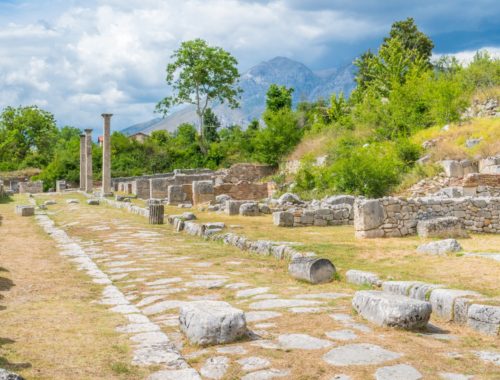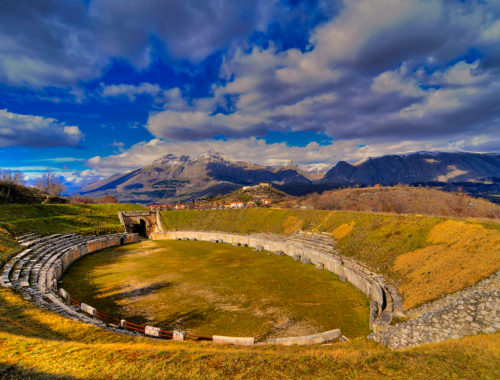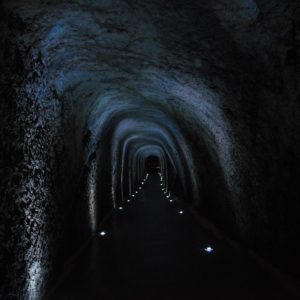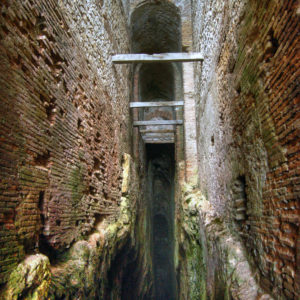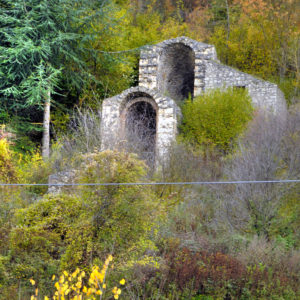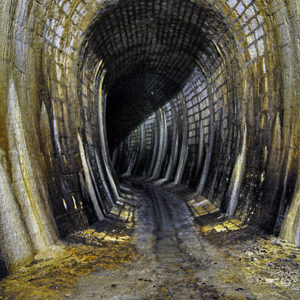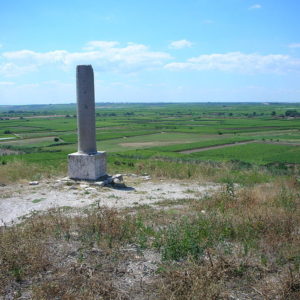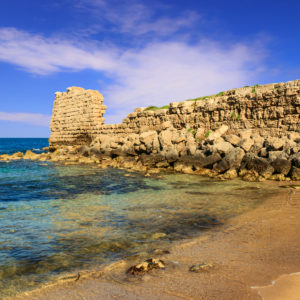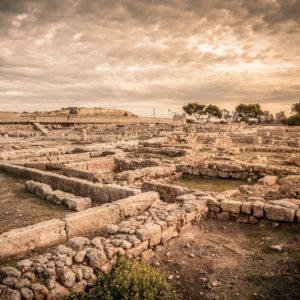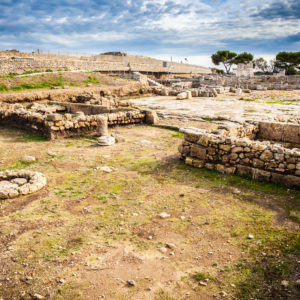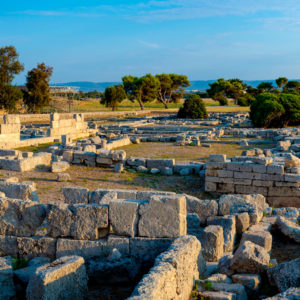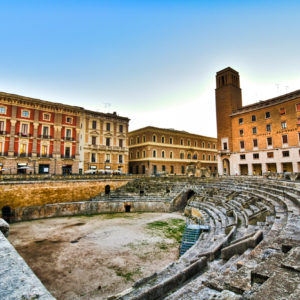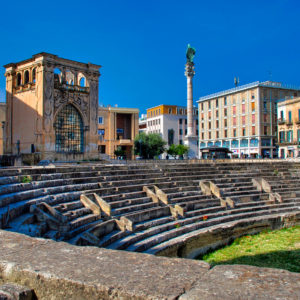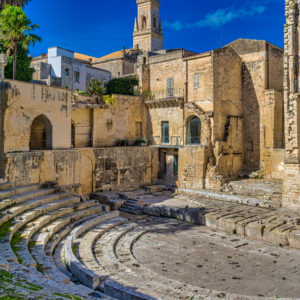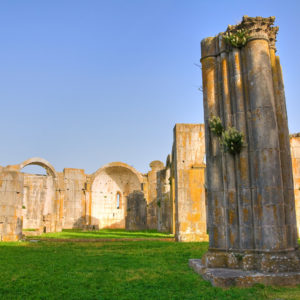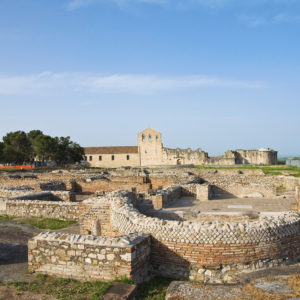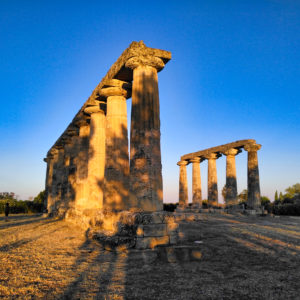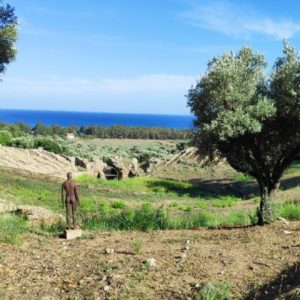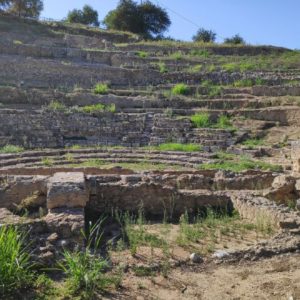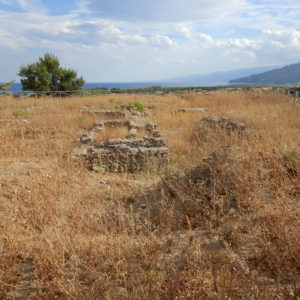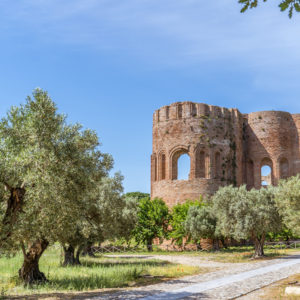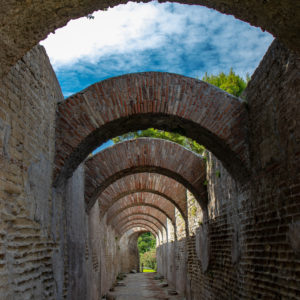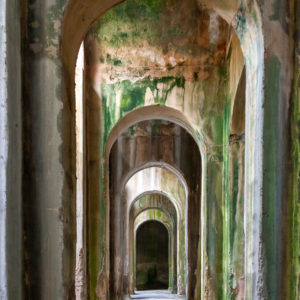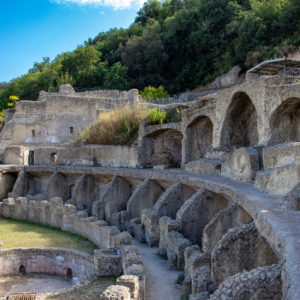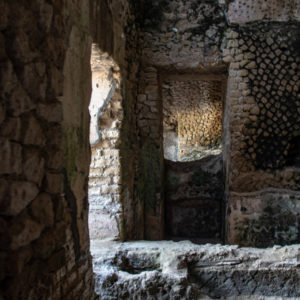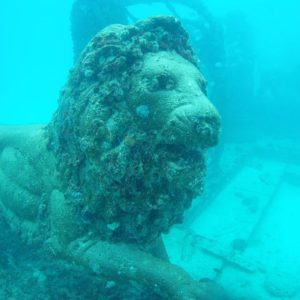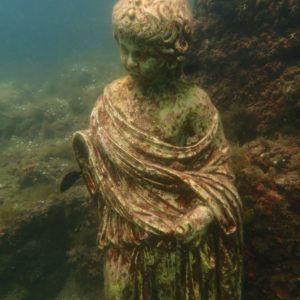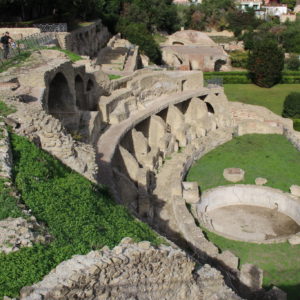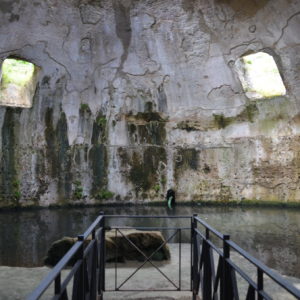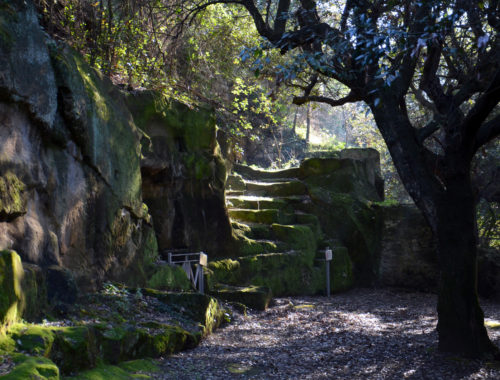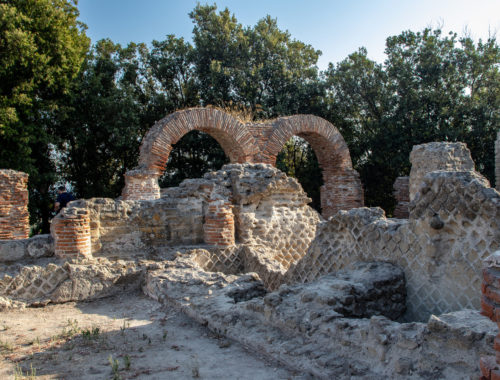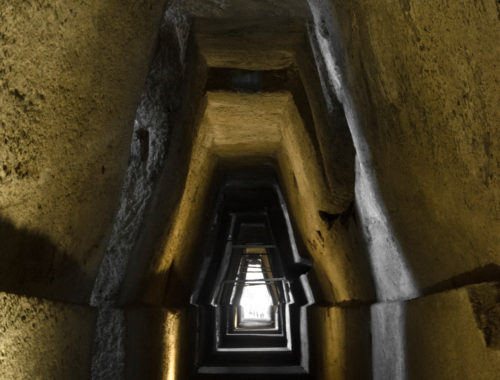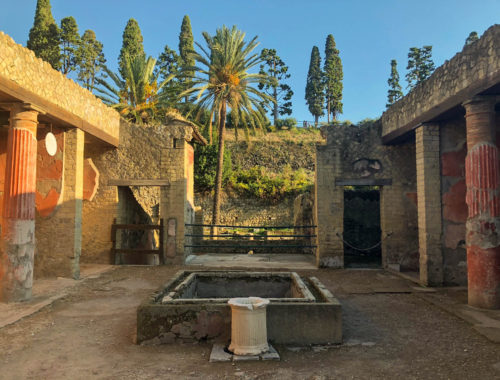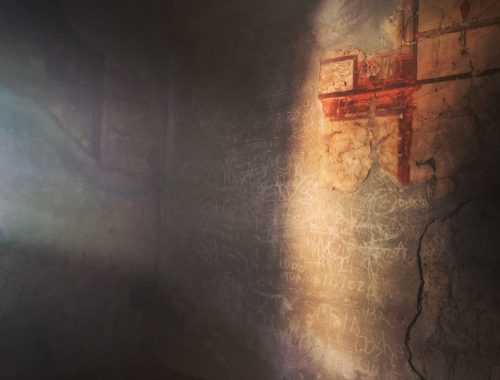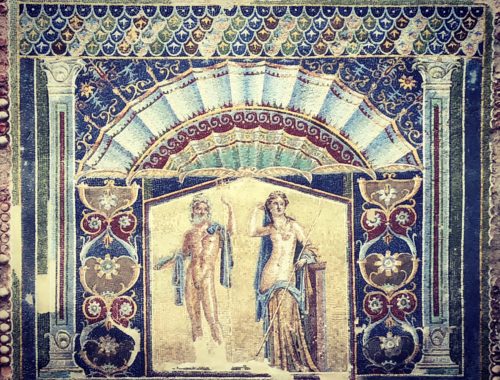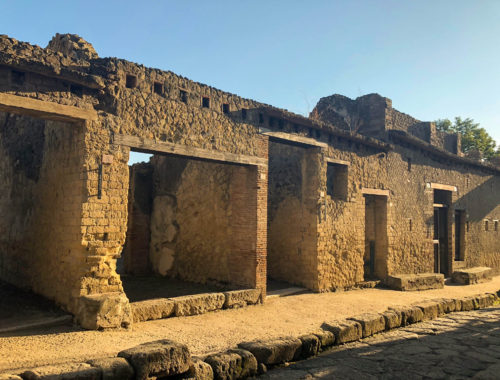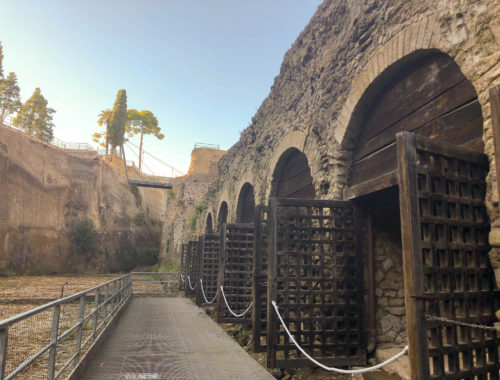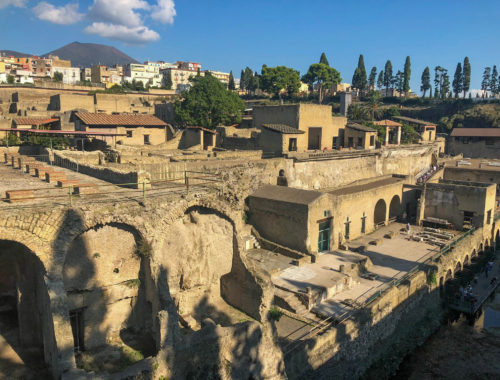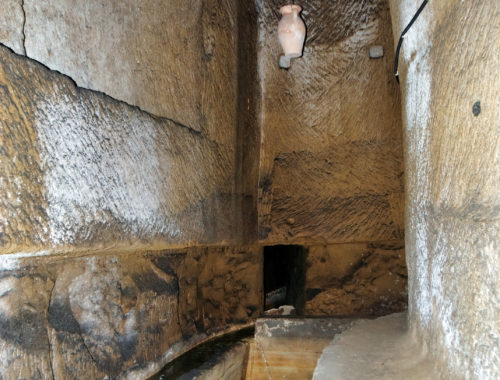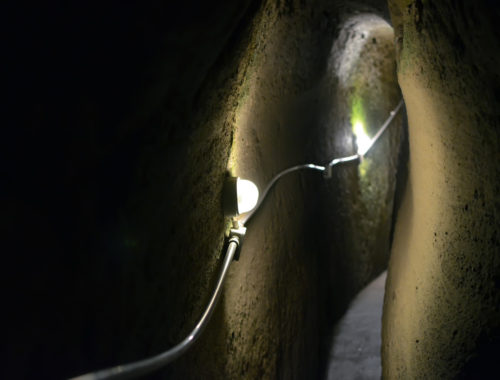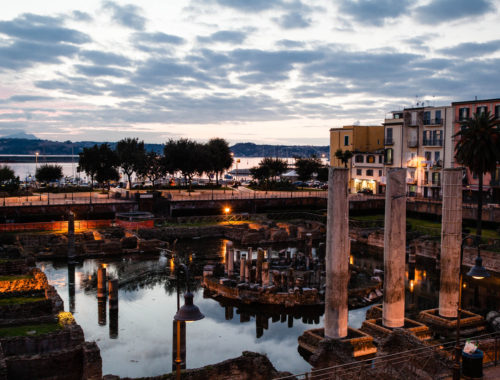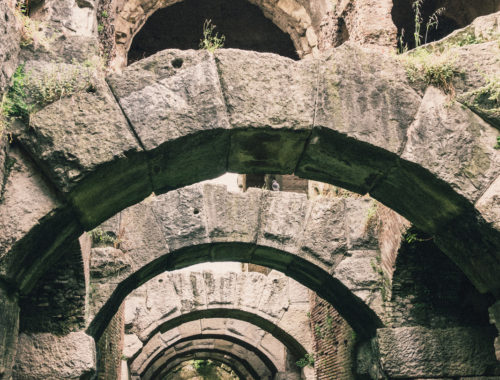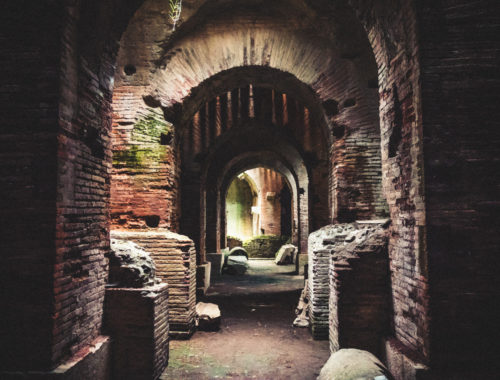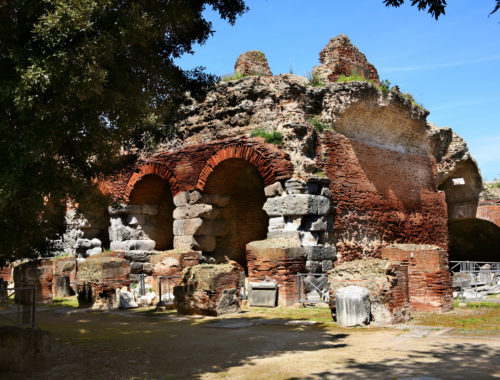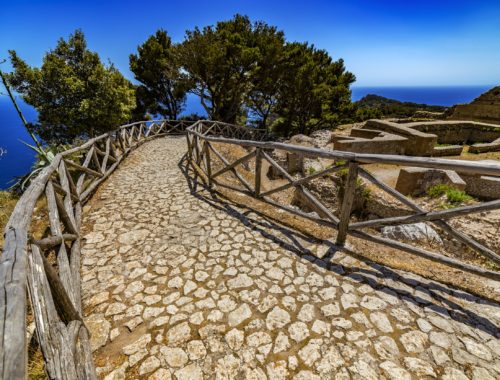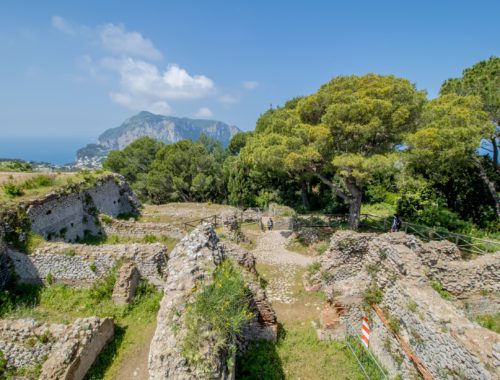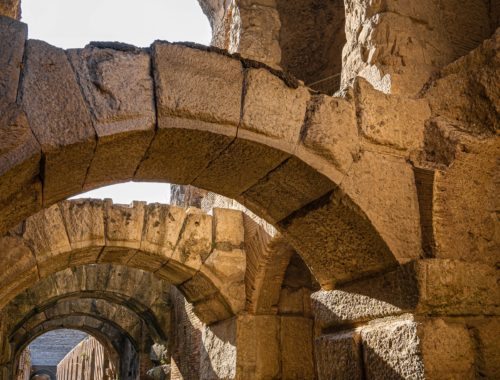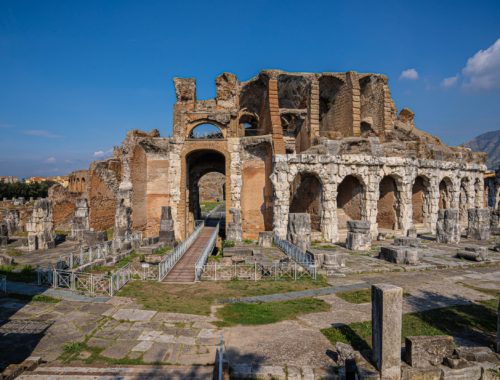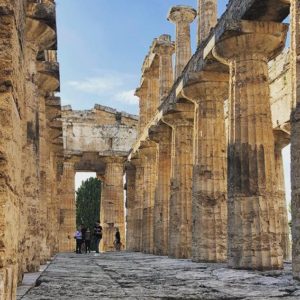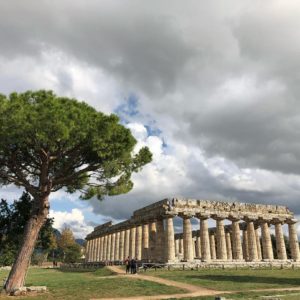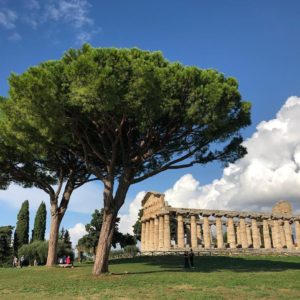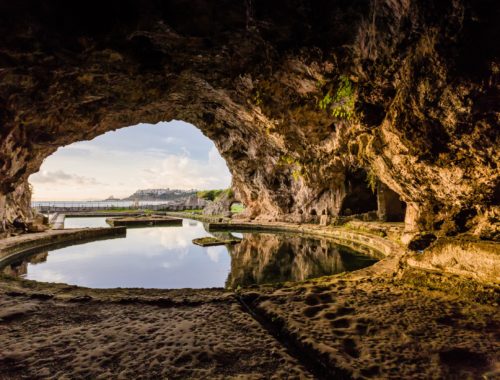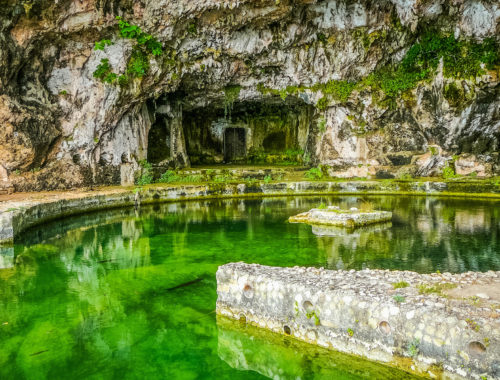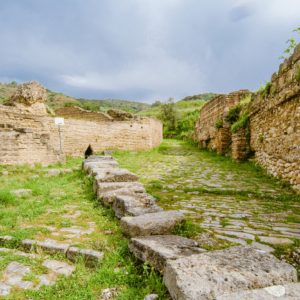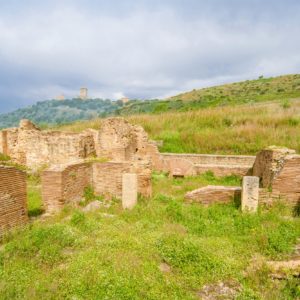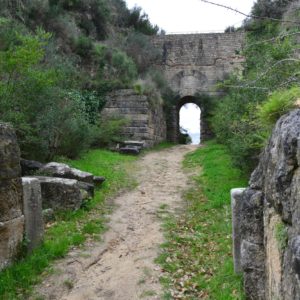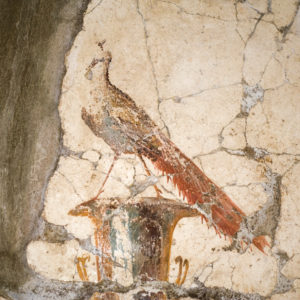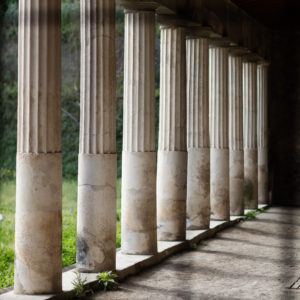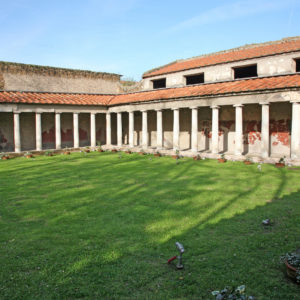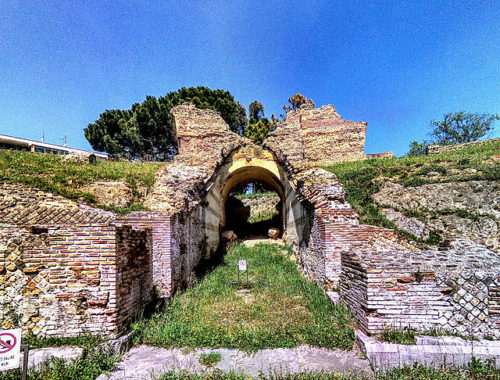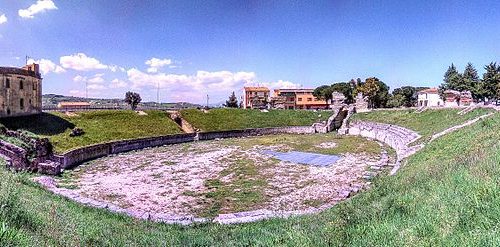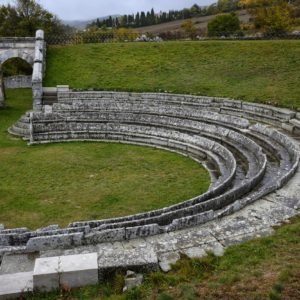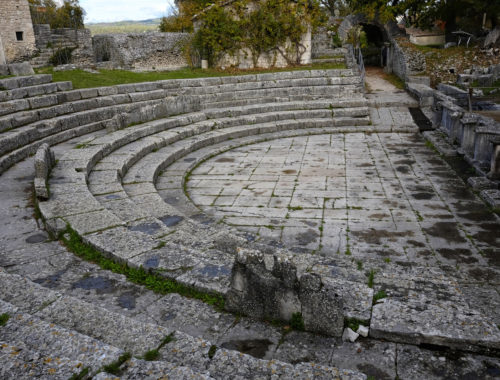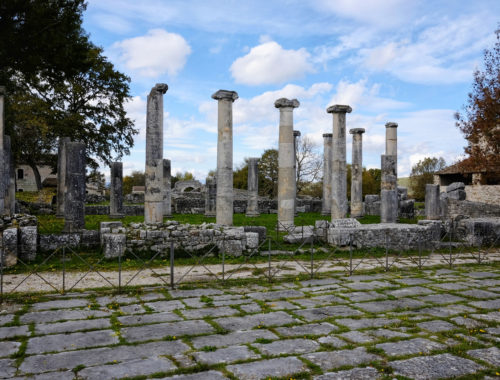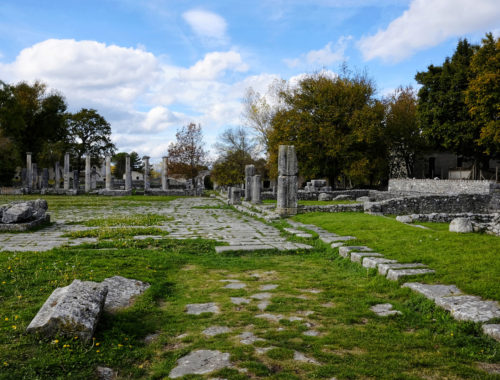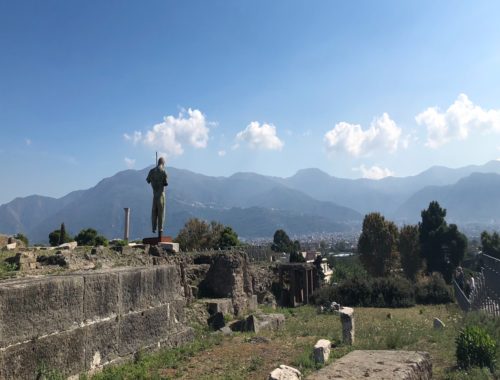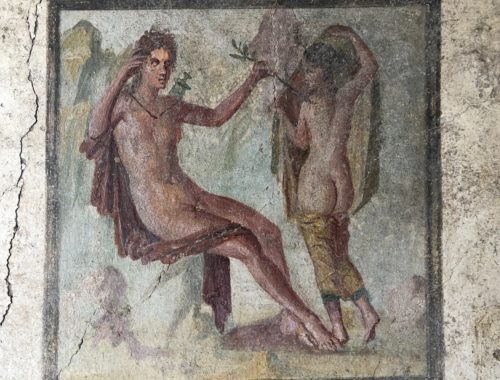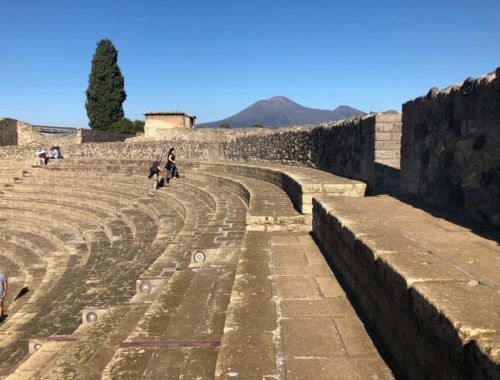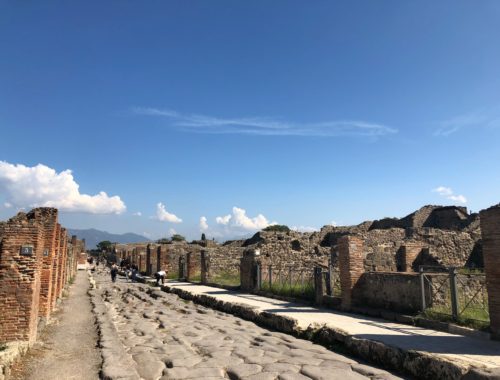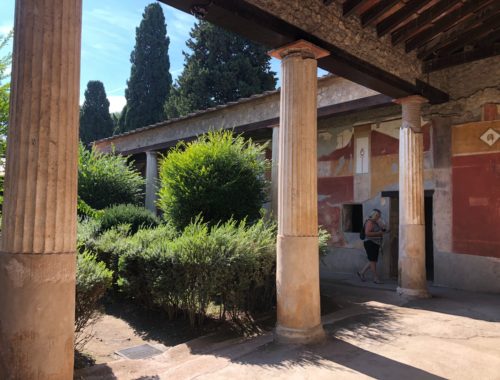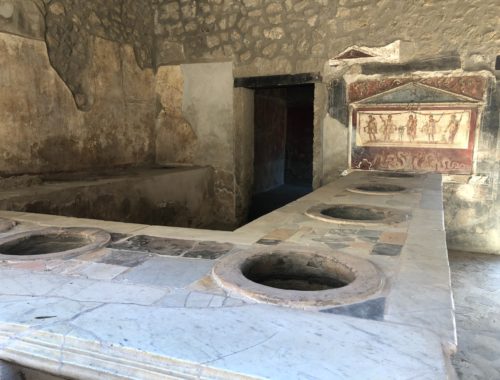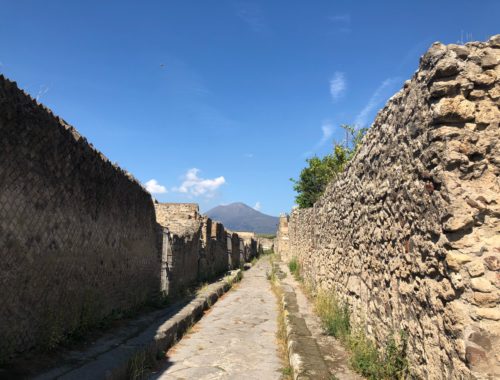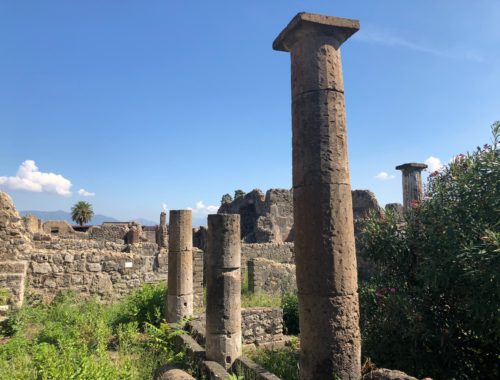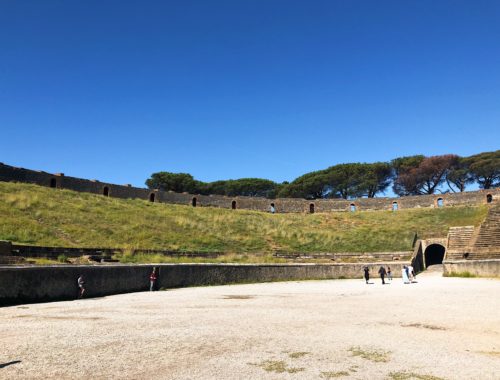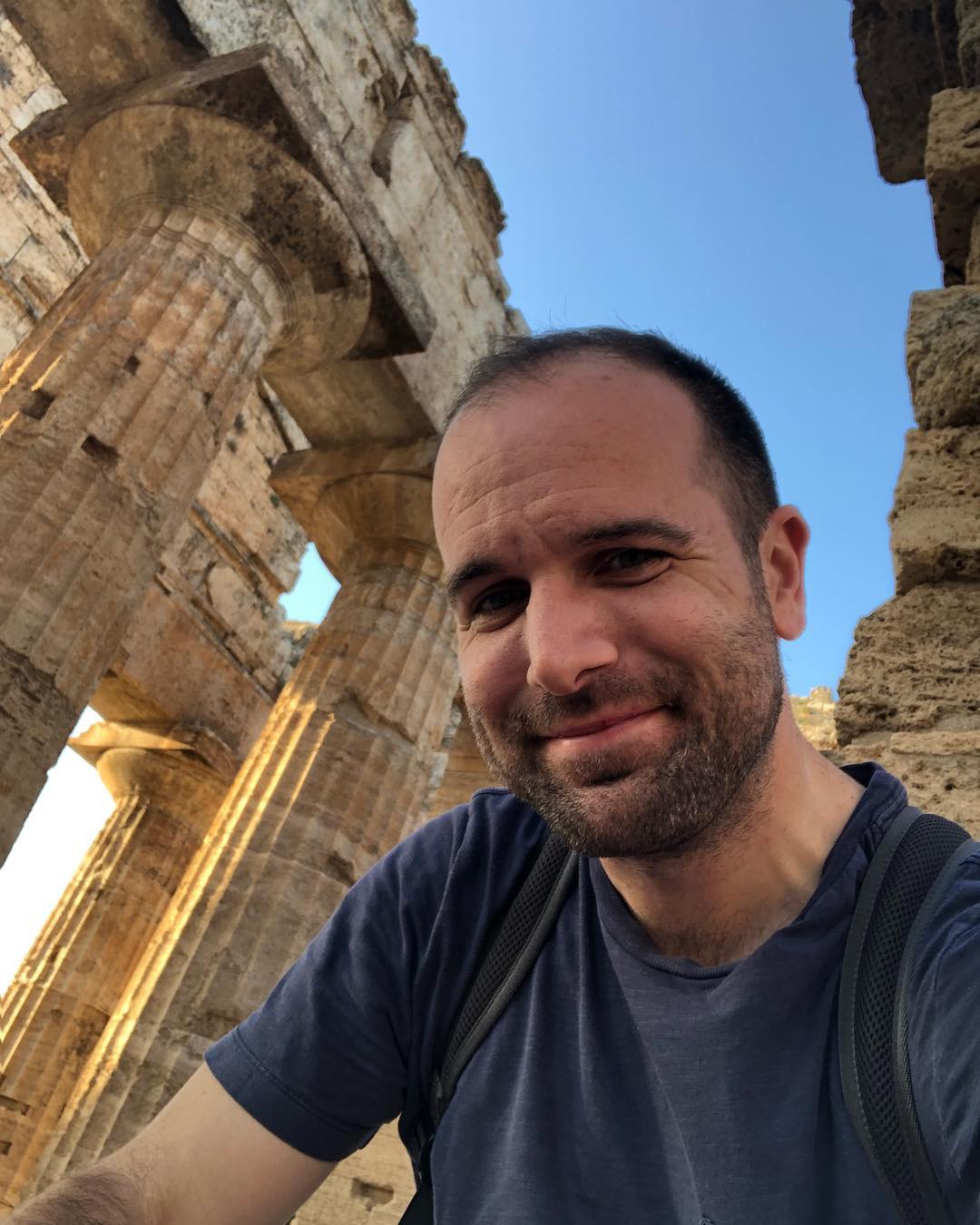Italy South
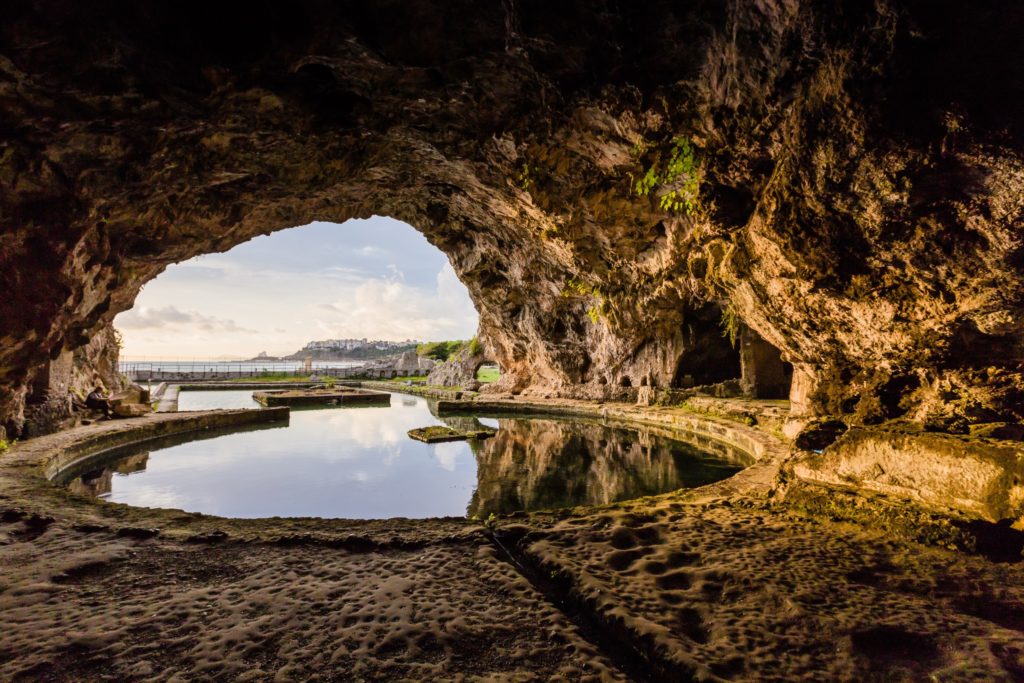
“Magna Graecia”
The “Mezzagiorno” is home to the oldest ancient sites of Italy. The Greeks heavily settled this region, so much so that the Romans referred to it (along with Sicily) as “Magna Graecia” or Greater Greece. This defines much of the archaeological record of Southern Italy since it was, at the time, the wealthiest area of the peninsula.
Along with the Greeks, the other major civilization of the south were the Samnites of the southern Appenines. It was their conflict with Rome which gave the Roman Republic power over the peninsula. The Pyrhic War with Pyrrhus of Epirus later led to Roman domination over the Greek city-states of the south.
While Pompeii and Herculaneum deservedly get a lot of attention, it’s truly remarkable just how many sites you can visit in Southern Italy and be relatively unbothered by other tourists. Paestum and Metaponto bring the ancient Greek core of this region back to life, while Lecce has integrated it’s monuments into it’s city center.
However, for sheer unlooked for brilliance, get on a bus in Naples and head west to the region known as the Campi Flegrei, a dormant volcano caldera found at the northern end of the Bay of Naples. It has an absolutely staggering amount of sites, from the underwater city of Baiae; Miseno, where Pliny the Younger watched the eruption of Vesuvius 2,000 years ago; Bacoli, with it’s massive cistern, the Piscina Mirabilis; Cumae, the original Greek city of southern Italy; and Pozzuoli, the town at the heart of it all, with its huge amphitheater. It’ll take some serious logistics to figure out all of it, but a day spent in this region is well worth it.
The National Museum of Magna Graecia in Reggio Calabria ties everything together with a spectacular collection summarizing the ancient city-states of Calabria, Basilicata, and Sicily. Go to their website here to find out more.
Abruzzo
Alba Fucens
In the center of the Italian peninsula, in the Abruzzo region. It sits at the base of Monte Velino, just north of the town of Avezzano.
The remains of an old Italian town of the Aequi, before becoming a Roman colonia by 304 BCE, making it a very early entrant into the Republic’s empire. It was most notable for being a place where state prisoners were detained. It was destroyed by invaders from North Africa in the 10th century.
The ampitheater (pictured above)
The base of the forum
The walls and defensive fortifications
How to get there
Coming from Rome or L’Aquila you can drive through motorway A24-A25 heading to Pescara. Coming from Pescara you take motorway A25 heading to Rome. Exit at gates for Avezzano and Magliano dei Marsi. As soon as you leave the motorway you will see the hill of Alba Fucens to the north.
Hours
Open for free from sunrise to sunset. If you go to the tourist office in the square 100 meters before the parking lot, you can get a free small pamphlet and a guided tour of 1 hour and 45 minutes, prices may vary
Amiterno
In the heart of the Apennines, about 9km from L’Aquila.
A major city of the Sabines prior to the Roman conquest of 293 BCE. It lay at the point of four roads, the Via Caecilia, Via Claudia Nova, and two branches of the Via Salaria. The Roman historian Sallust was born here in the 1st century BCE.
- The Roman theater, set into the hill, could seat up to 2000 people.
- The amphitheater could seat up to 6000 people.
The park with the ampitheather is across the street from the theater. Open from 9-2pm. Entrance is free.
Great information on the site here: https://www.sitiarcheologiciditalia.it/en/amiternum/
Tunnels of Claudius
The eastern entrance lies a few kilometers south of Avezzano. The western exit of the tunnels is in Capistrello, on the other side of Mount Salviano.
Commissioned by the Emperor Claudius between 41 and 52 CE to control the levels of Fucine Lake. By controlling the levels of the lake, it allowed reclaimed lands to be farmed. The tunnel was 6km (3.7 miles), until it came out on the other side of Mount Salviano where it met the Liri River. The tunnel was the longest tunnel ever built until the Frejus Rail Tunnel in 1871. As the Western Empire collapsed, the main tunnel became clogged due to lack of maintenance. A new tunnel was begun in 1854 to allow for the drainage of the lake again.
Much of the tunnel has been repurposed for the new tunnel built in the 1850s, but there remain some areas where the Roman era can be seen. The tunnels include:
Major Tunnel located on the eastern side of the mountain, features three large arches, the entrances join after a short inner stretch. Deeper inside there is the oblique tunnel.
Blacksmith Tunnel sits on the eastern side of the mountain. A first stretch was paved and equipped with lighting. The bypass connects it with Major Tunnel.
Imperial Tunnel located lower compared to the previous one, connected to it through the well no. 23.
Coppersmith, Machine and Oil-Lamp Tunnels, on the western side of the mountain.
As far as I can tell, the Archeological Park of Claudius, on the eastern side, is closed to the public to protect the site. I’d recommend stopping in Avezzano to ask the tourism site if it is possible to visit or not.
Cannae
Equidistant (about 14 km) from both Barletta or Canosa di Puglia.
The site of one of the most famous (and bloody) battles in human history. Cannae was the culmination of Hannibal’s campaigns in Italia during the Second Punic War. During the battle, he slaughtered up to 90,000 Roman soldiers using the now infamous Cannae “double envelopment tactic” to feint the Roman army into being encircled. A municipium later developed in the area.
There is very little to mark the site, save for a column. Many conjecture if this was even the actual site of the battle, but it’s the best we can do for now.
The site can be hard to find via GPS. Try putting in Parco Archeologico “Canne della Battaglia”, SP142, 76121 BT, Italy. This site has a lovely summary of a visit to Cannae.
Canosa di Puglia
One of the oldest continually inhabited cities in Italy, Canosa (known as Canusium by the Romans), is the principal archaeological center of Apulia.
Originally founded in the 7th century BCE by the Dauni tribe, it first came under Greek, then Roman rule. It sits close to the site of the Battle of Cannae, Hannibal’s greatest victory over the Roman legions. Many of the Roman survivors found protection in the town. It later became the capital of the Italian district of Apulia within the empire.
- Canosa “castle”, actually the ancient acropolis
- Hypogeum: the ancient catacombs including:
- Ori Tomb (4th century BC)
- Ipogei Monterisi-Rossignoli (4th century BC)
- Varrese Tomb (4th century BC)
- Hypogeum Cerberus (4th century BC)
- Ipogeo Scocchera A (4th century BC)
- Ipogeo Scocchera B (called Ipogeo Boccaforno, 4th century BC)
- Ipogei Casieri (4th century BC)
- Hypogeum Vessel Dario (4th century BC)
- Ipogei Lagrasta (2nd century BC)
- Ipogeo dell’Oplita (2nd century BC)
- Ipogeo Matarrese
- Ipogeo Reimers
- Tomb of Largo Constantinople (3rd century BC)
- Necropolis of Santa Sofia (2nd-4th century AD)
- Roman bridge over the Ofanto river
- Temple of Jupiter “Toro”
- San Leucio Basilica, an ancient pagan temple transformed into a church.
- Roman baths
- Arch of Gaius Terentius Varro
- Lapidarium with Roman inscriptions
As with so much of Southern Italy, a car is really necessary to get in and around the city to see the sites.
The Roman bridge can be found just to the west of town off Strada Provinciale 231.
The ruins of the castle can be found here in the western part of the city.
The main ruins can be found in the Archaeological Parks of San Leucio and San Giovanni. Hours are 9am to 1pm and 3pm to 7pm.
Canosa has a terrific site dedicated to the many archaeological sites in the area.
Egnazia
On the Adriatic coast, about 45 minutes south of Bari.
The ruins of the ancient city of Gnatia. Originally founded by the Messapii tribe, it was conquered by the Romans in the third century BCE. More information can be found here.
There are three separate areas to visit:
- Necropolis (w/ museum close by)
- City ruins: Defensive Walls, Forum, Ampitheater, Cryoptoporticus, Furnace
- Acropolis
Sitiarcheologiciditalia.it has opening times and ticket costs. The address is Via degli Scavi, 87, 72010 Savelletri BR, Italy
Lecce
It could lay claim to being Southern Italy’s most beautiful city, all whitewashed limestone with a Greek air reminiscent of its history as one of the cities of ancient “Magna Grecia”. The actual founding date is lost, though myth states it existed during the Trojan War (12th century BCE). The city was known as Sybar, but the Romans changed it to Lupiae when they conquered it in the 3rd century BCE.
Hadrian later moved the city 2km to the northeast. It remained a part of the Roman Empire even after the fall of the western division, ruled at a distance from Constantinople until the 11th century.
The Roman ampitheater is the showstopper, situated in the very heart of the city’s main square, Piazza Sant’Orozo. It once sat up to 14,000 spectactors.
There is also a Roman theater (pictured above), that was only recently rediscovered in 1929. It used to seat up to 4000 people. It is distinctly more “hidden” than the amphitheater. (See Logistics below)
As stated above the ampitheater is found in main square, Piazza Sant’Oronzo.
Meanwhile, the intimate theater is more hidden. From Chiesa Santa Chiara, take the small street on the left, Via Arte della Cartapesta. The entrance is on Via degli Ammirati and costs 3 euro, including a small museum.
Basilicata
Venosa
Originally a Greek city founded by the Homeric hero Diomedes. It’s name was originally Aphrodisia, then changed to Venusia, reflecting the change from the Greek goddess of love, Aphrodite, to her Roman name of Venus. The city was said to be named thus as a way to appease Aphrodite after Diomedes aided in the destruction of her beloved Troy.
Taken by the Romans in 291 BCE, it became a colonia with 20,000 men sent there. It was so strategic that the Appian Way was extended to the town. The poet Horace was born here.
Much of the modern town has reused materials from the Roman era. The Orazio House in the town is named for Horace as it was thought to be his birthplace, but it is actually a reworked Roman bath. It lies inside the town.
The rest of the structures are further afield in the Archaeological Park:
- A domus
- Baths
- Amphitheater
Like all of Southern Italy, a car is the most convenient route. Opening times and ticket prices can be found here. For more information on the town’s history, go to Dooid Italy.
Metaponto
At the very innermost part of the “arch” of the Italian boot. in Basilicata.
Estimates place the founding at 700 BCE to 690 BCE, which would make it slightly younger than Rome. But this town was far more developed than Rome, being a Greek colony, founded by Greeks from the western Peloponnese.
For a large part of its existence, the town was rich and flourishing. The philosopher Pythagoras retired in this town later in life and died here. It attempted to maintain strict neutrality in the Peloponnesian war, something which they were not altogether successful in doing.
After the invasion of Pyrrhus of Epirus in the Pyrrhic war with Rome (early 3rd century BCE), the city sided with the Romans, until Hannibal’s invasion of Italy in the late 3rd century. After the catastrophic defeat of the Romans at the Battle of Cannae, Metapontum was one of the first cities to declare for Hannibal. However, the Romans eventually were able to expel the Carthaginians from Italy and the Metapontans supposedly withdrew from Italy as well.
Cicero and Strabo both mention the city but also that it, like most of Magna Graecia, was now decaying into ruins, just as Rome was at the height of its conquest of the Mediterranean.
All of the following are found at the Archeological National Museum
- The Temple of Hera (pictured above) is the main attraction here. Doric style built between 570 and 530 BCE.
- Temple of Aphrodite built in 470 BCE in the Ionic style.
- There are also the foundations of several more temples.
- The theater remains as well, though it has been augmented by bleachers.
- Antiquarium
- Agora
- Roman “castrum”
How do I get there?
It would be best to have a rental car and drive from nearby Matera, which is a true gem and the perfect place to have a based of operations for any nearby areas. It is only about 45 minutes from Matera to Metaponto.
Near the ruins is the Archaeological Museum in Pisticci.
Cost
The cost for the park is 2.50 Euro and it is open Tuesday to Sunday from 9am to 8pm. Like all parks in Italy, admission is free the first Sunday of the month.
Link
Metaponto
Calabria
Crotone
On a promontory overlooking the entrance to the gulf of Taranto.
One of the most populous cities of Magna Graecia, Kroton (founded in 710 BCE) had a population of around 50,000 to 80,000 around 500 BCE. According to Herodotus, the physicians of Croton were considered the foremost among the Greeks. After the Pyrrhic War, half of the city was depopulated, after which it submitted to Rome. Hannibal made it his winter quarters for three years during the Second Punic War. The city became a Roman colonia in 194 BCE.
Very little remains of Crotone, other than the evocative column of the Temple of Hera, considered one of the most beautiful in Italy.
The Museum and Archaeological Park of Capo Colonna is the main site and has all the information that visitors will need.
Locri
Near the tip of the Calabrian peninsula, about two hours from Reggio Calabria.
Known in ancient times as Epizephyrian Locris, it was founded in 680 BCE by the Locrians from near the Gulf of Corinth in Greece. Plato called it “the flower of Italy”. The local population in particular worshipped Persephone and Aphrodite.
The Locri Archeological Park is an open air museum with the following areas of particular interest:
- The Centocamere,
- The Stoà, a U-shaped porticoed structure,
- The theater
Everything you could want to know about visiting the park can be found here.
Sibari
The confluence of three ancient towns, Sybaris, Thurii, and Copia Romana near modern Sibari.
Once one of the most prosperous cities in Magna Graecia, Sybaris was destroyed by the people of Kroton, after which they founded a new city, Thurii, which later fell to the Romans and was renamed Copia Romana.
Most of the surviving archaeology is from Copia.
- Parco del Cavallo, a district made up with two large plateion and one theatre;
- Casa Bianca, a built area dating back to VI century BC, with a round tower;
- Stombi, an urban area only partially reconstructed in 510 BCE.
The Salice Resort has an overview of how to visit.
Scolacium
About 20 minutes from Catanzaro, on the gulf of Squillace.
Though it is supposedly of Greek origin, like much of Southern Italy, it appears nowhere in Greek records. The first official mention of it is when the Romans sent a colonia to Scylletium, which then became known as Colonia Minervia, with a later colonia placed there by Nerva. The distinguished Roman statesman Cassiodorus was born here after the collapse of the Western Roman Empire.
The Scolacium Archeological Park is in the midst of a grove of olive trees. Within it can be found:
- The outline of the Forum
- The theater
- Amphitheater
- A necropolis
This website provides an overview of the park and how to get there.
Villa Romana di Casignana
Along the southern Calabrian coast, about 20 minutes south of Locri.
A villa of a wealthy patrician family, it was originally built in the 1st century CE but it was later restructured during the fourth century.
The villa itself is the structure and this site gives a breakdown of what is in it.
Hop in a car when you’re visiting Locri and head down south!
Campania
Bacoli
In the western suburbs of Naples, right next to Puzzeoli, Miseno, Baiae, and Cumae.
Founded by the Romans as Bauli in the 2nd or 1st century BCE. Like most of the towns on the Bay of Naples, it was a popular resort. Symmachus said of it: “I left that place because there was a danger that if I became too fond of Bauli, all the other places I have left to see would not have pleased me”.
Be sure to check out nearby Miseno, where Pliny the Younger watched the eruption of Vesuvius in 79 CE as related in his writings.
- The Piscina Mirabilis, an astonishing Roman cistern (it’s name literally means “wondrous pool”). Privately owned but can be visited by the public.
- The Cento Camerelle
- The so-called Tomba Agrippina, a theatre belonging to an ancient villa.
Here is some more information on the Piscina Mirabilis: https://www.italianways.com/piscina-mirabilis-the-hidden-light/
Per Lonely Planet, you have to book at least two hours in advance to see the Piscina Mirabilis.
Baiae
While only about 25 minutes from Naples, it can take an hour by bus or 30 minutes by car to get to this resort town on the northern end of the bay.
As with neighboring Miseno, this was one of the major Roman resort towns and continued to operate as such even after the eruption of Vesuvius in 79 CE. Several emperors had villas here and Hadrian died here in 138. The famous pontoon bridge of Caligula was built here.
A large portion of Baiae was submerged due to it’s resting on empty magma chambers that filled with water. Today, the nymphaeum is entirely underwater. This can be visited on the Cymba Baia Sommarsa and viewed via a glass bottom boat.
The rest of the structures found above water can found within walking distance of each other in the local archaeological park.
- Temple of Diana
- Temple of Mercury (with an amazing dome)
- Temple of Venus
- Villa of the Ambulatio
- Sector of Sosandra
The information on the Cymba Baia Sommarsa can be found here. If you’re feeling really adventurous, you can go scuba diving amongst the ruins as well. More information can be found here.
The above ground archaeological park is free from Tuesday to Fridays. Closed on Mondays. Saturdays and Sundays, you need to have a Campi Flegrei ticket. Address is Via Sella di Baia, 22, Bacoli
Cumae
In the western suburbs of Naples, in the town of Puzzuoli
The first Greek settlement in Italy, Cumae was founded by settlers from Euboea in mainland Greece in the 8th century BCE. It eventually became one of the richest and most powerful cities in Magna Graecia, which continued under Roman rule. Naples was founded by settlers from Cumae.
- Temple of Diana
- The Sybil’s Cave, or the Antro della Sibilia. Named after the Cumaen Sibyl, the priestess who prophesized Aeneas’ journey to the Underworld in Book 6 of Virgil’s Aeneid, this cave is thought to be the site where she conducted her oracles and prophesies.
- Capitoline temple of Jupiter, Juno and Minerva
- Temple of Isis
- Temple of Demeter
- Temple of Apollo
- The Acropolis
- Arco Felice: A 20 m high monumental entrance to the city built in a cut through Monte Grillo. It was built of brick and tiled in marble, and surmounted by two rows of arches of lighter concrete covered with brick. The piers had three niches on both sides where statues were placed. The via Domitiana, whose paving is still perfectly preserved and is in continuous use today, connected to the via Appia as well as with Pozzuoli and Naples.
- The forum
- Grotta di Cocceio
- Crypta Romana: The Crypta Romana is a tunnel dug into the tufa under the Cuma hill, crossing the acropolis in an east-west direction, giving an easier route from the city to the sea. Its construction is part of the set of military enhancement works built by Agrippa for Augustus and designed by Lucius Cocceius Auctus in 37 BCE.
- Masseria del Gigante
It can be confusing to find Cumae. This forum on TripAdvisor has some good pointers.
https://www.sitiarcheologiciditalia.it/en/cumae/ (Directions and Hours)
Herculaneum
Just outside of Naples on the Circumvesuviana train.
While at one point almost forgotten in the shadow of it’s more famous sister city, Pompeii, Herculaneum now enjoys more renown thanks to continual excavations.
Like Pompeii, Herculaneum was a popular seaside retreat for the wealthy Roman elite. Named for the Greek hero Hercules, it was founded by the Oscans sometime in the 5th century BCE, only later falling under Greek and Roman control. Its people fought for Roman citizenship in the so-called Social War of 89 BCE. It was destroyed in the eruption of Mount Vesuvius in 79 CE. Most of the inhabitants probably made it out before the pyroclastic flow completely covered the city.
It was actually discovered before Pompeii, in 1709. However, the sheer size of Pompeii brought more attention. Despite Pompeii’s extent, it could be said that Herculaneum survived more intact. Wood was carbonized by the pyroclastic material, as was food and papyrus, allowing these objects to remain unscathed by the centuries.
While a smaller site than Pompeii, Herculaneum might be just as rewarding given how much more preserved parts of it are. Like Pompeii, it’s an immense open-air museum. I’ve got links galore to far more detailed sites than mine, which can give you a terrific overview and in-depth description of the site.
As above, VisitPompeiiVesuvius has the best all-around description of the site and how to get there.
To actually get to the town of Ercolano where the site is located, you will need to take the Circumvesuviana train. It’s a very popular service, so be prepared to be crammed in (and watch out for pickpockets). **There are two train stations named “Ercolano”. You want to stop at the one that is “Ercolano Scavi.” Just get out and walk towards the sea and you will get to the site.**
Naples
One of Italy’s largest cities and the gateway to the South, Naples is often maligned because it is an actual city and not as touristy as many others in Italy. A lot of this has to do with the endemic crime that the city has suffered, much of which has to do with Southern Italy’s treatment by the central government since unification in general. Nevertheless, it has some truly stunning Greco-Roman sites.
Founded by the ancient Greeks as one of the chief cities of what Magna Graecia, the ancient Neapolis (“New City”) was a wealthy trading city at the heart of one of Rome’s favorite vacation getaways, stretching around the bay, including Pompeii and Herculaneum. Neapolis was taken in the Pyrrhic Wars by the Romans and survived the Carthaginian invasion of the Second Punic War as well as the Vesuvian eruption in 79CE, whose pyroclastic flows and pumice only narrowly missed the city.
- Naples Underground, the incredible subterranean remains, some as deep as 20-40 meters, of the ancient city’s underground burial tombs and an aqueduct network.
- The Greco-Roman Theater, usually visited on tours after seeing the Underground. The one I went on had us enter the apartment of a woman who had recently passed away. The apartment was itself a piece of the theater, and, underneath the woman’s bed, was a secret entrance to the main catacombs of the ancient theater itself. Stunning.
- The Roman market housed under the church of San Lorenzo Maggiore.
- Naples National Archaeological Museum, which has remains not only from ancient Neapolis, but Pompeii and Herculaneum as well. An absolute must.
- Catacombs of San Gennaro, an incredible paleo-Christian series of tombs, thought to have been built around the 3rd to 4th centuries.
San Lorenzo Maggiore is conveniently located right across the street from the entrance to the Naples Underground, which also takes you on a tour of the Roman theater.
If you plan to stay in Naples, I would recommend not staying around the train station. The Centro Storico area is beautiful and would be a good base from which to explore the city.
Here is the link to more information about the San Gennaro catacombs.
Pozzuoli
In the western suburbs of Naples, right next to Bacoli, Baiae, and Cumae.
Originally a Greek colony, the Romans established a colonia in 194 BCE. It’s name was Puteoli, referring to puteus (a well or cistern) and fistulus (quarry). It could also be from puteo (to stink) a reference to the sulfuric fumes coming from the volcano field, the Campi Flegrei, that it sits in the middle of.
It was a major emporium for grain shipments from Alexandria and all over the Roman world. It was also the main hub for goods exported from Campania. The dictator Sulla died here at his villa in 78 BCE.
Most importantly, this is also the home of concrete! The local volcanic sand formed the basis for the first effective concrete. It reacted with water instead of evaporating slowly. The Pantheon was built using this concrete.
The apostle Paul landed here on his way to Rome and it was here where Caligula built his infamous floating bridge that stretched over 3.2km, over to Baiae, in defiance of the astrologer who predicted that he had “no more chance of becoming Emperor than of riding a horse across the Gulf of Baiae.”
While the entirety of the Campi Flegrei is probably the third greatest archaeological site in Italy, Puzzeoli really takes the cake when it comes to monumental architecture, including it’s own Flavian amphitheater, the third largest of its kind.
Macellum Temple, was actually a market building, NOT a temple, for the Roman colony.
Rione Terra, which is the ancient quarter of the city, houses the Temple of Augustus, which was converted into the Duomo of San Parcolo.
Roman Pozzuoli
https://www.yumsome.com/pozzuoli-the-dodgy-end-of-italy/
http://www.naplesldm.com/pozzuoli.php
Villa Jovis (Capri)
On the isle of Capri, just off the Amalfi coast of Campania. Naples and Sorrento are the nearest towns and cities of note. The ruins are the remains of the emperor Tiberius’ massive palace.
Completed in 27 CE, it became Tiberius’ main habitation until his death in 37 CE. He actually had 12 villas on the island (per the historian Tacitus), but this was the largest.
The villa is somewhat infamous in that it was also the spot where Tiberius would have people who fell out of his favor executed, by being thrown from the cliff.
The entire complex covered some 1.7 acres, with a variety of elevation with a difference of up to 40 meters.
The main building now has about eight levels remaining, with some reconstruction on the site. There is also a watch tower that was used for telegraphic exchanges with the mainland by fire.
Capri itself can be reached by ferries from Naples, Sorrento, or Salerno. Those tend to be the main bases for island excursions. There’s a reason the Romantic painters fell in love with this island’s stunning beauty, but we’ll stick to the ruin itself, which is found on the very northeastern part of the island on Monte Tiberio.
Access to the ruin is only possible by foot, with an uphill walk of about 2km from the town of Capri:
From the Piazzetta, walk the length of Via Longano, continuing along Via Sopramonte and finally Via Tiberio. Otherwise, from the Piazzetta take Via Le Botteghe, Via Fuorlovado, Via Croce, and finally Via Tiberio. It’s an uphill walk and will take about 45 minutes.
Capua
About an hour train ride north of Naples, near the larger town of Caserta.
Founded somewhere around 600 BCE, possibly by the Etruscans, the city of Capua was Italy’s second city for a long time during the periods of the Early and High Roman Republic.
It originally submitted to Rome sometime around 338 BCE during the Samnite wars, though it would prove to be somewhat untrustworthy as an ally. It was later connected to Rome by the Via Appia, but after the defeat of the Romans at Cannae by Hannibal, Capua defected to his side. It would later be sacked by the Romans and the vast majority of its citizenry sold to slavery.
Though the city remained with some populace, (and was one of the main sites of training for gladiatorial combat, including that of Spartacus) it was later made a colonia by Julius Caesar.
Important cemeteries dating back to the 7th or 5th century BCE
An Etruscan temple on the eastern part of the town.
Along the Via Appia: the public baths and a Roman theater.
The Arch of Hadrian in Santa Maria Capua Vetere
Most striking of all is the ampitheater, built during the time of Augustus and later restored by the emperors Hadrian and Antoninus Pius. It was the second largest ampitheater in the Roman world, behind only the Coliseum. It includes the Mithraeum, a stunning underground worship site for the cult of Mithras.
There are far too many to name, so please go to this site for a comprehensive view of the ruins of this once-great city.
To actually get to Capua, the easiest way is from Naples. Take the train up to Caserta (where there is an absolutely STUNNING palace for the Bourbon kings of Southern Italy right outside of the train station). Stay on the train for one more stop at Santa Maria Capua Vetere. It’s about a 20 minute walk to the ampitheater from there.
Visit World Heritage has a nice breakdown of the ampitheater and how to find it.
Paestum
Located in southern Campania, about a 45 minutes south of Salerno.
Founded by the Greeks as the city of Poseidonia around 600 BCE, the city flourished as one of the major ports of Magna Graecia.
After it was taken by the Romans in 273 BCE in the Pyrrhic Wars, it was expanded, but eventually fell into decline in the fourth to seventh centuries CE until it was eventually abandoned.
It was “rediscovered” in the 18th century, after the initial rush of excitement of the excavations of Pompeii and Herculaneum nearby.
While the Roman ruins include an amphitheater, a forum, and some streets, the real reason for anyone to visit Paestum are the three amazingly well preserved Greek temples, built between 550 BCE and 450 BCE:
Temple of Hera: oldest of the three temples (550 BCE)
Temple of Neptune (Poseidon): The most complete of the three, built in 450 BCE. (Pictured above)
Temple of Athena: Further apart from the other two, it was built around 500 BCE
The easiest way to get to Paestum is to just take the train from Salerno train station to the Paestum stop. Afterwards, get off and head west on the main road for about a 10 minute walk. The museum is generally open from 8:30-7:30 every day, while the site itself closes about an hour before sunset.
It generally costs about 6 euro for entry for a single person. More information on the site can be found here.
Sperlonga
Off the Via Flacca, almost halfway between Rome and Naples.
A summer villa of the Roman emperor Tiberius.
Not much remains save for some low walls and the atmospheric grotto, where the emperor once dined.
A connected museum now holds the treasures found in the grotto: enormous ancient sculptures by the same artists who made the famous Laocoön found arranged in groups around the inside of the grotto, such as the Blinded Polyphemus and the Scylla Group, and groups depicting scenes from the Odyssey.
You can take the train from Termini in Rome to Sperlonga. You can take a bus from the station.
Hours: 8:30am to 7:30pm for 5 euro
https://www.atlasobscura.com/places/villa-and-grotto-of-tiberius
Velia
Founded by Ionian Greeks from Phocaea in 545 BCE, who were fleeing Persian invasions and wandered for 10 years until finding this location in Southern Italy. Eventually the city was conquered by the Romans in 273 BCE. In the Aeneid, Velia is the place where the body of Palinurus washed ashore.
The porta rossa gate is found just to the north of the town. Several towers extend out over three miles around the town
Villa Oplontis
Close to Pompeii in between Naples and Sorrento.
Oplontis was a suburb of Pompeii and the villa, also known as the Villa Poppaea, was destroyed at the same time as Pompeii and Herculaneum, . It was believed to have been owned by the Emperor Nero or his wife, Poppaea. It was originally built in the 50s BCE, but was enlarged over time. For a nice overview of the site, go to Pompeiisites.org.
The luxury villas that survive here are remarkable and are worth the detour from Pompeii:
- Villa A (Villa of Poppea)
- Villa B (L. Crassiue Tertius, not open to the public)
Several towers extend out over three miles around the town
Pompeiisites.org gives a detailed breakdown of how to get there.
Molise
Larino
Located in the foothills of the eastern Apenines, Larino is about 25 km from Termoli.
Originally a Samnite town, it was incorporated into the Roman Republic in the late 3rc century BCE.
The main structure left is the amphitheater, built in the 1st century CE. It could fit 12,000 spectators. There are also baths with partially visible mosaics, along with the remains of the forum.
Like all of southern Italy, driving is the easiest way to get there.
- More in-depth information on the ruins in Larino can be found here: https://www.sitiarcheologiciditalia.it/en/larino/
- Mon-Sat: 8:30am to 1:30pm
- Free entrance
Pietrabbondante
In Molise, near Isernia
Founded by the Samnites in the 6th century BCE, many historians believe that it was home of the assemblies of the Samnite federal government. Although earlier scholarship thought this was the Samnite town called “Bovianum“, this is now believed to be incorrect and the site is viewed as a Samnite sanctuary. There seems to have been significant decrease in use after the loss of the Samnites and allies during the Social Wars, at the hands of Lucius Cornelius Sulla (89 BC)
Theater (pictured)
Temple
Pietrabbondante is situated about 20 kilometers north-east of Isernia and 30 kilometers northwest of the capital of Molise, Campobasso.
https://www.resources.immobiliarecaserio.com/village-of-pietrabbondante-insernia-molise/
Saepinum
In the hills at the foot of the Matese massif, 20km to the south of Campobasso, down the hill from the town of Sepino.
Per the Rough Guide, Saepinum is the “best example of a provincial Roman town” in Italy. Founded by the Samnites (whose original construction is up the hill from the Roman town), the town reached its peak in the period of the Pax Romana. After that, it appears the town was in decline by the 4th century CE.
The town is small and can be explored fully at a leisurely pace.
- The forum in the centre of the town, where the two main streets – the cardus maximus and the decumanus maximus – cross, is easily identifiable, flanked by the remains of major public buildings.
- At the western end of the decumanus maximus lies the well-preserved gate Porta Boiano. The statues flanking the arch are of prisoners captured after battle and the inscription is to Tiberius, the step-son and successor of the Emperor Augustus.
- Theater
- Thermal Baths
- Museo della Citta e del Territorio
You can take a bus from Campobasso to Sepino and ask the driver to stop. Otherwise, driving yourself is the easiest way.
Pompeii
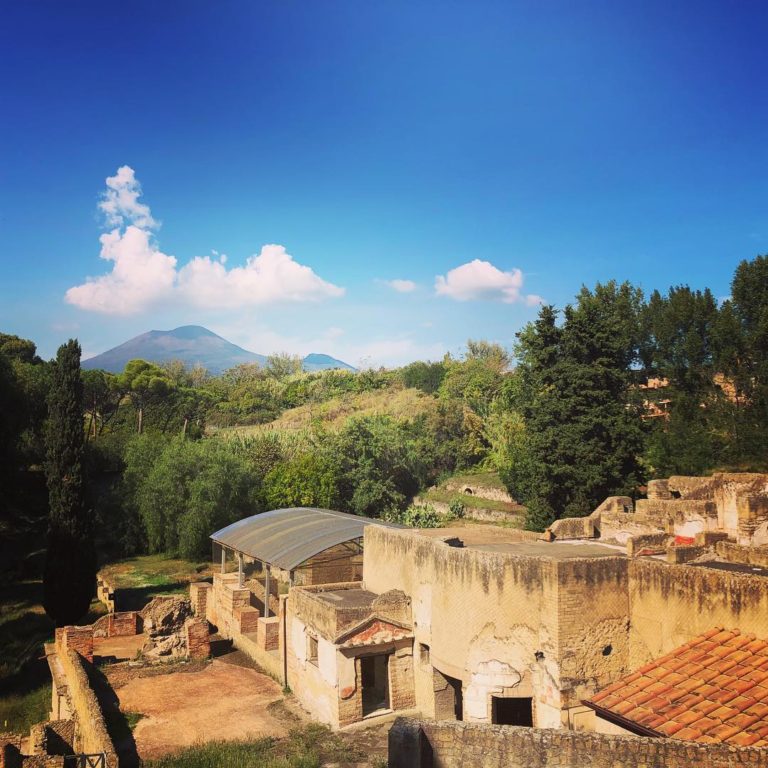
A minor town by Roman standards, Pompeii’s legacy is assured mostly because it has been so amazingly preserved from its destruction under Mt. Vesuvius in 79 CE. A Roman resort town in its heyday, the vast majority of the population escaped before the pumice and pyroclastic flows from the volcano sealed its fate. The plaster casts of those who were unable to leave are haunting representations of those in the last moments of life.
What makes the town’s survival special is because of 1) how ordinary it was. This was not seat of power with monumental architecture and 2) the EXTENT of what survives. There are few other ancient sites in the Mediterranean world where you can wander an actual ancient city, even with so much of it’s accoutrement stripped from it.
You can see the markets, the theater, amphitheater, forum, and the houses of the wealthy, but you can also see the dwellings of common folk. None of these buildings are complete and vary in the extent of what is still there, but there is just nothing like wandering the streets of Pompeii all day. For me, this is especially true in the northern part of the city, which is where the common people lived and is therefore not usually bothered by the daily tourist groups. It really is remarkable and well worth your visit.
That being said, there’s A LOT to talk about. This website is designed for more off the beaten path recommendations and just about everyone knows about Pompeii. However, logistics are important and it’s not as straight a shot to get there as you would think. Also, I can’t go into detail about every domus, but I’ll try to provide links to places that can:
Pompeii Sites should be your first virtual stop when researching the city. It is the official site and I don’t think you could find a better resource anywhere on the web.
The Crazy Tourist has a collection of various tour types you can take. I’m not a fan of tours, honestly, especially in a city like Pompeii, where the real joy is in wandering around. However, if your time is limited, go there for some options.
If you wish to do a self-guided tour, here is one of many options provided by Luxe Adventure Traveler. Nomadic Matt hits some of the high points in his blog as well.
To get to Pompeii from Naples, you must take the Circumvesuviana train from the Naples train station if you are not being driven. If you are arriving from Rome, simply take the high-speed rail to Naples and then transfer to the Circumvesuviana line. It’s not the nicest train and if you have luggage, it can be a nightmare, so judge accordingly.
For tickets, you may go to Pompeii Sites for more information and to buy tickets in advance.
